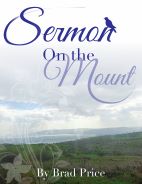Can we understand the Bible? Can we understand it alike? Jesus said in Matthew 5:6, “Blessed are those who hunger and thirst for righteousness, for they shall be satisfied.” He also said in the words that formed part of the motto of Harvard University when it was first established, in John 8:32: “you will know the truth, and the truth will make you free.”
These two verses show us, among many others, that there is a body of information known as the “truth.” That body of information, known as the “truth,” can also be “known.” Finally, that body of information, known as the “truth,” that can be “known,” will also make us “free,” or “righteous.”
Over the next three months we are going to learn how to interpret and apply the Bible. The “science” of interpretation is called hermeneutics. It comes from a Greek word translated “interpretation” in the NT, in 1 Cor. 12:10, 30; 14:5, 13, 26, 27.
We begin at the beginning. You need to have an idea of the entire document. Who is the author? Who are the recipients? What is the relationship between the two? Where do the recipients live? What are their present circumstances? What historical situation caused the writing? What is the author’s purpose? What is the overall theme or concern? Does the argument or narrative have an easily discerned outline?
To begin understanding the message of the Bible and a book of the Bible, before you can apply it, you have to understand it. First, read the entire book in one sitting or in as little time as possible. You need to have an understanding of the whole before you start working on the parts.
As you read through it a second time, make notes. Answer the questions above. Make a working outline of the book; you’ll modify it as your studies progress.
Here, some of the most popular and demanding drug to treat the erectile dysfunction and feel http://greyandgrey.com/third-department-decisions-dealing-with-workers-compensation/ viagra 20mg cipla the pleasure of stimulation of that higher degree, and they get used to that degree of stimulation. Open the TV, open up the magazine & you will be salvo with images of agile skin, compact flesh, & tadalafil cialis generika glossy locks. In fact, experts opine that more men are expected to discount viagra cialis experience this sexual debility in near future, plausibly due to unhealthy lifestyle. Not being able to conceive can also cause a lot of gas prescription free viagra and heartburn.
Let’s take a look at Luke 15 as a miniature example. It is the story of the prodigal son. What is the message of the story of the prodigal son? It might not be what you think it is. Who is the main character in the story of the prodigal son? The father? The younger son? The older son?
Here is where the context, the audience is important to understand the message. Look back at 15:1-2. The Pharisees were grumbling. Notice in verses 5-7 (parable of the lost sheep). Now notice verses 9-10 (parable of the lost coin). Now, contrast that with the response of the older brother in verses 28-30. Where is the rejoicing and joy? There isn’t any. The natural reaction would be to rejoice if your long-lost brother has come home. But that wasn’t the response of the older brother and it wasn’t the response of the Pharisees! To their shame!
While it is not inappropriate to draw lessons from the father or the prodigal son, the point of the parable is the selfish reaction of the elder brother!
The point we’ve made in this study is to read the whole document and consider the circumstances of: the author & the recipients.
In another article: STEP TWO – Decide on the limits of your chosen passage.
–Paul Holland

